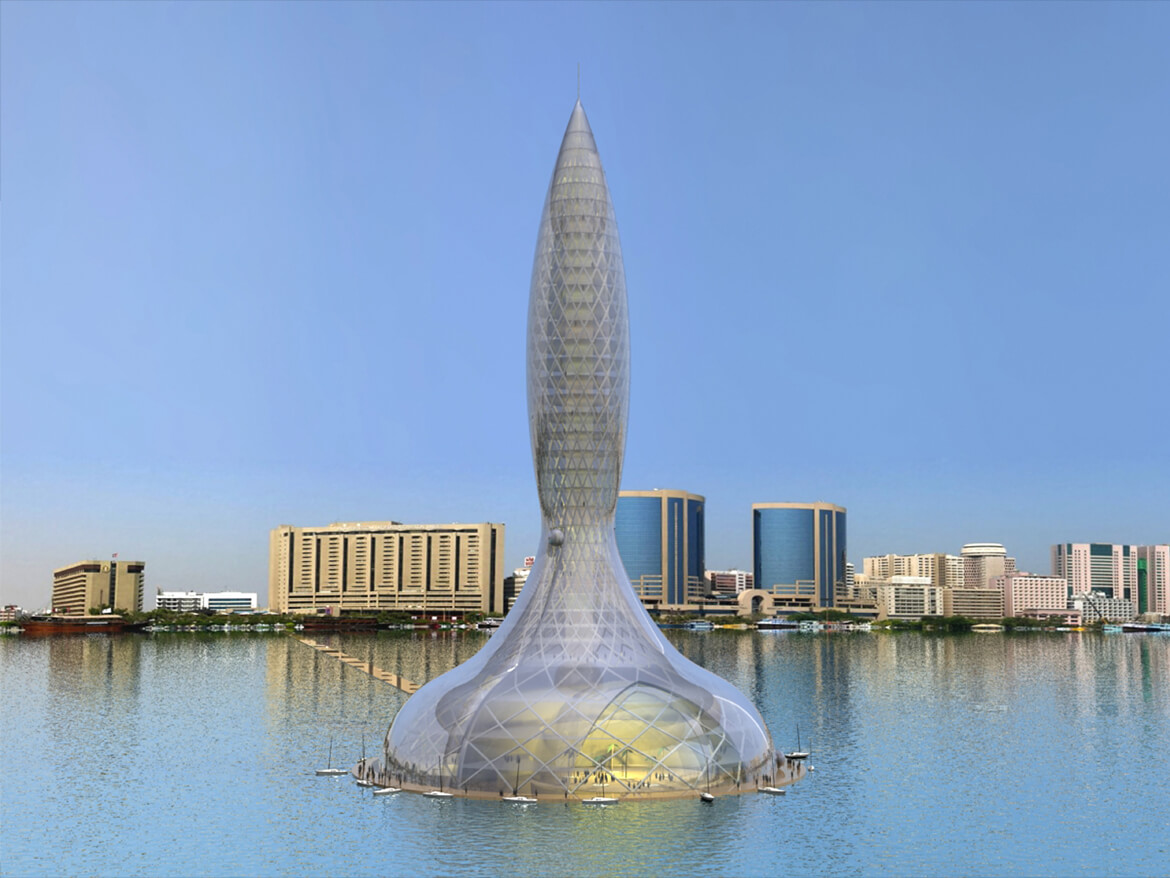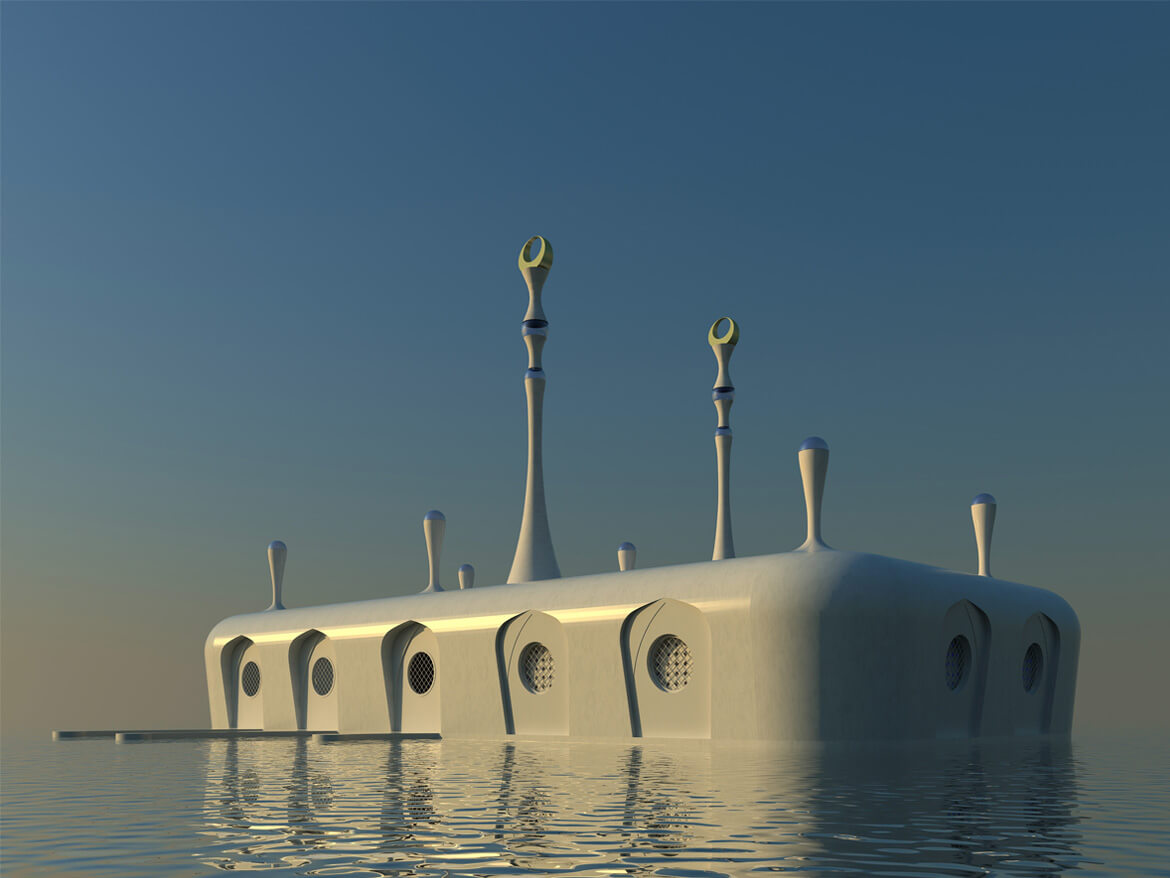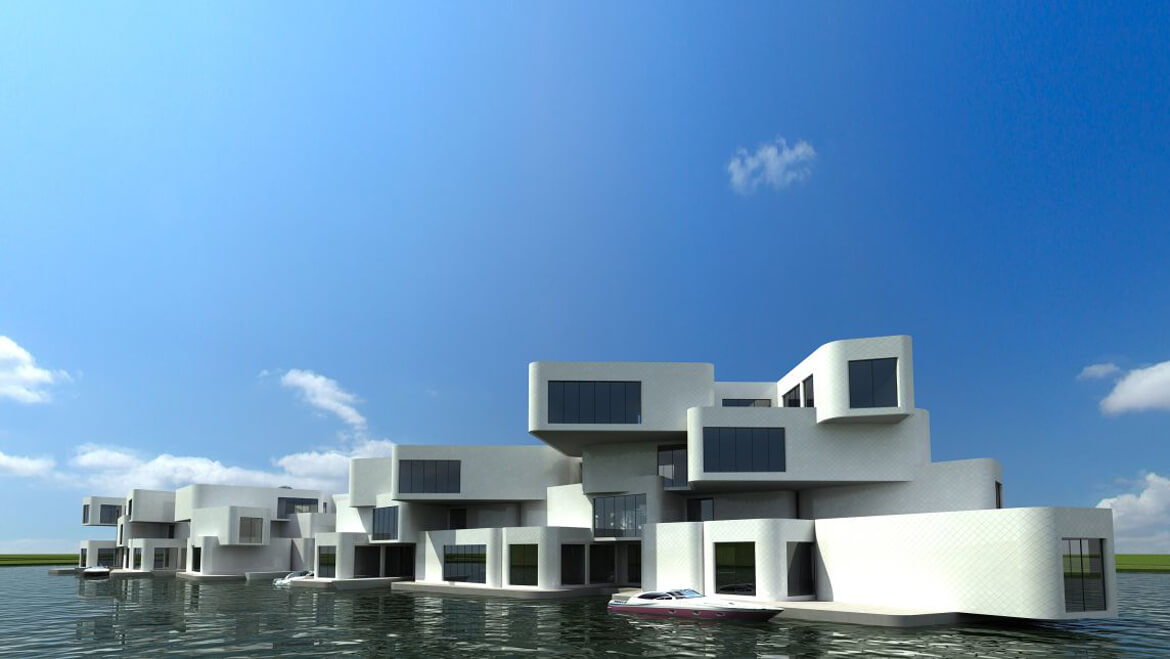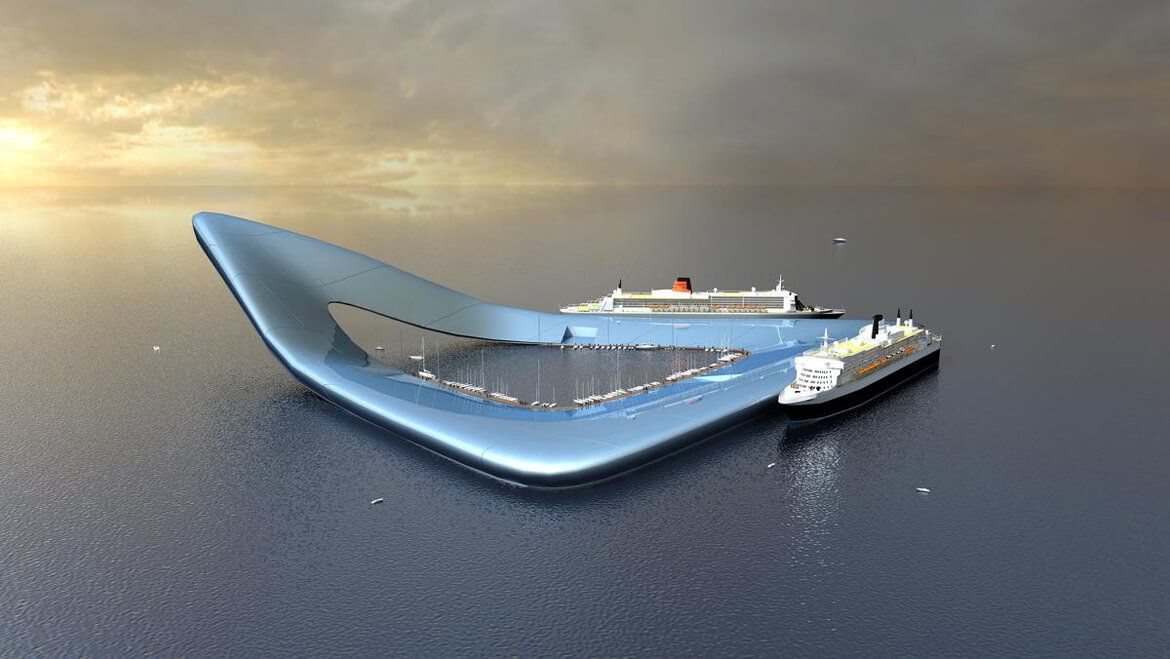The floating future of the Maldives, Mail Online
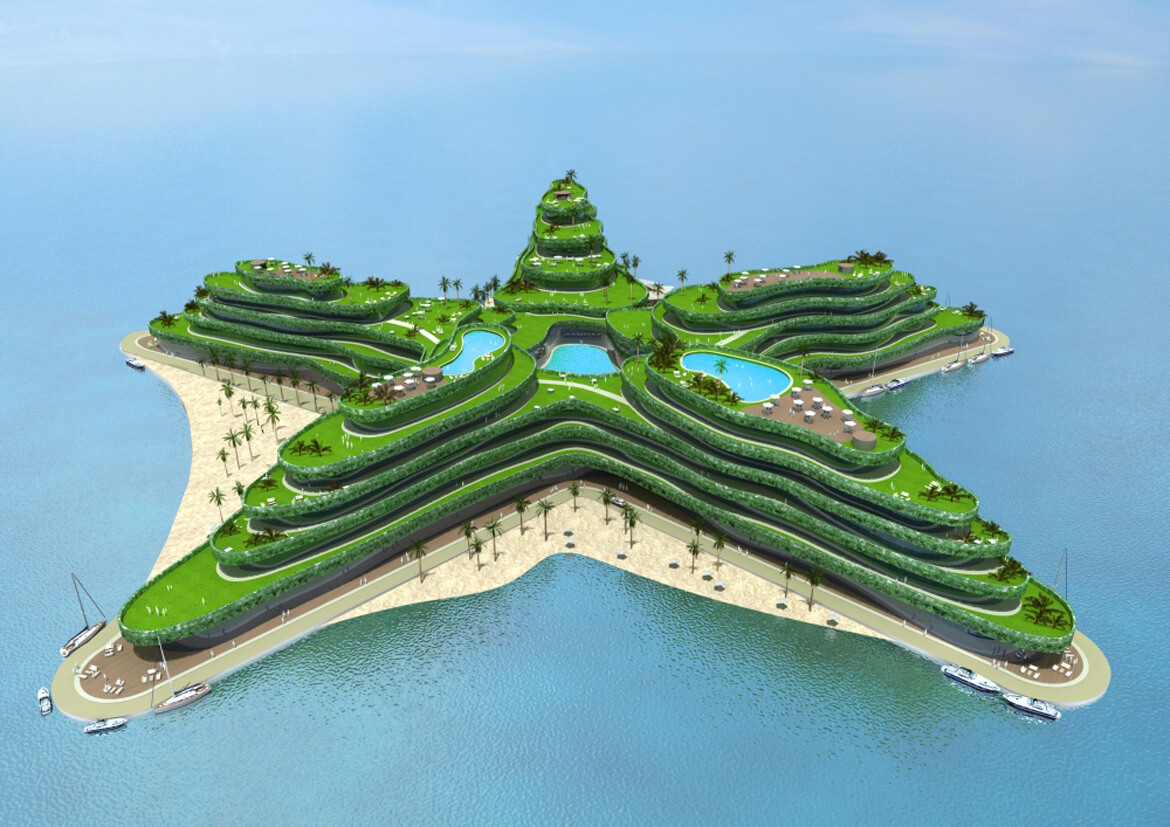
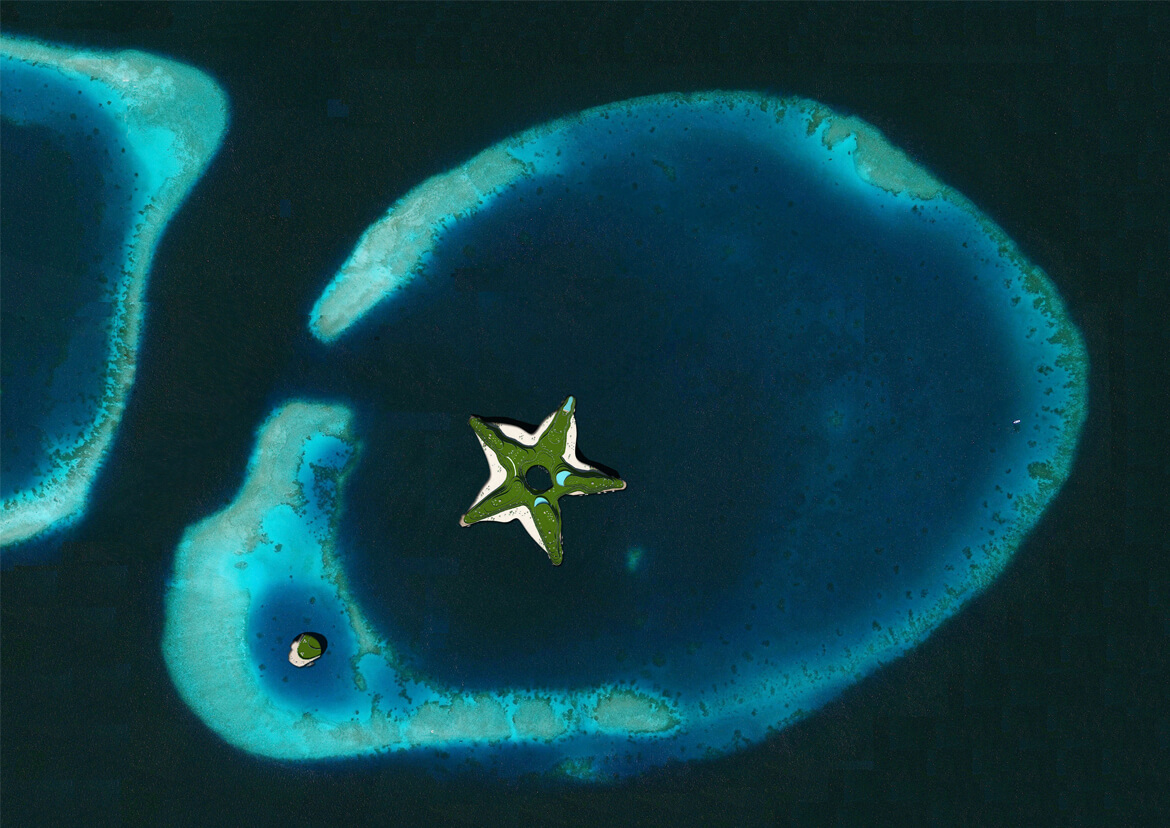
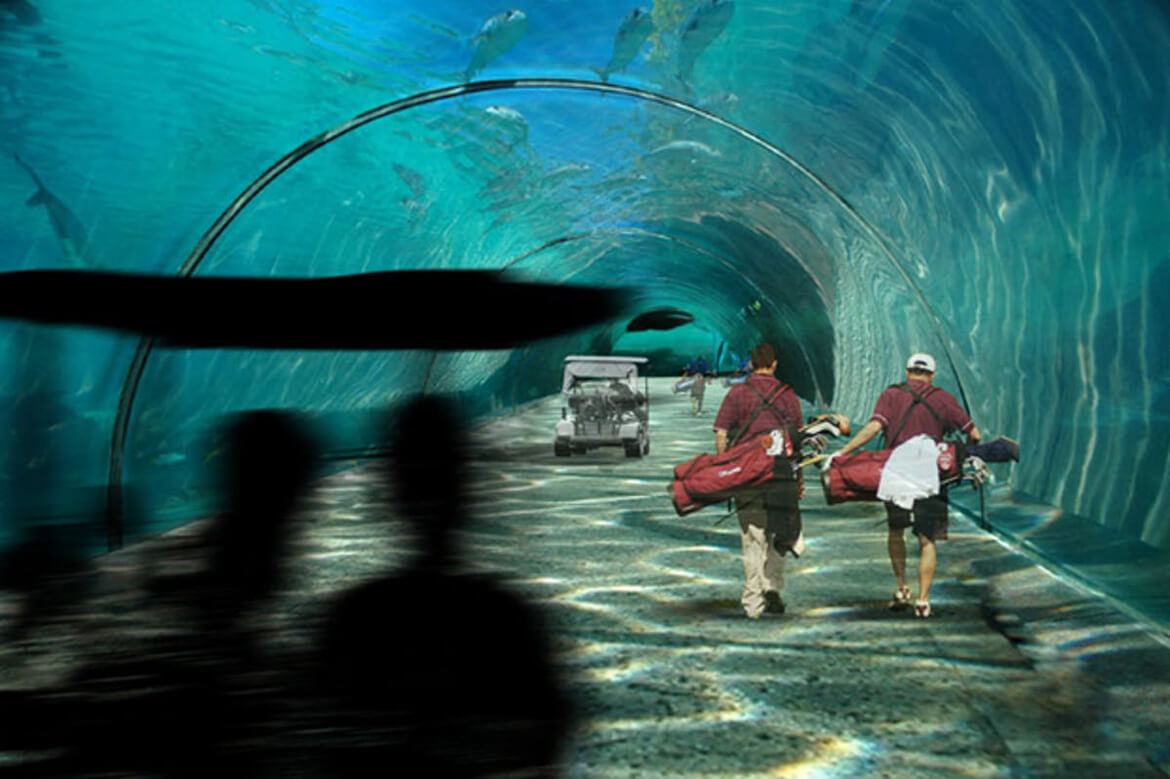
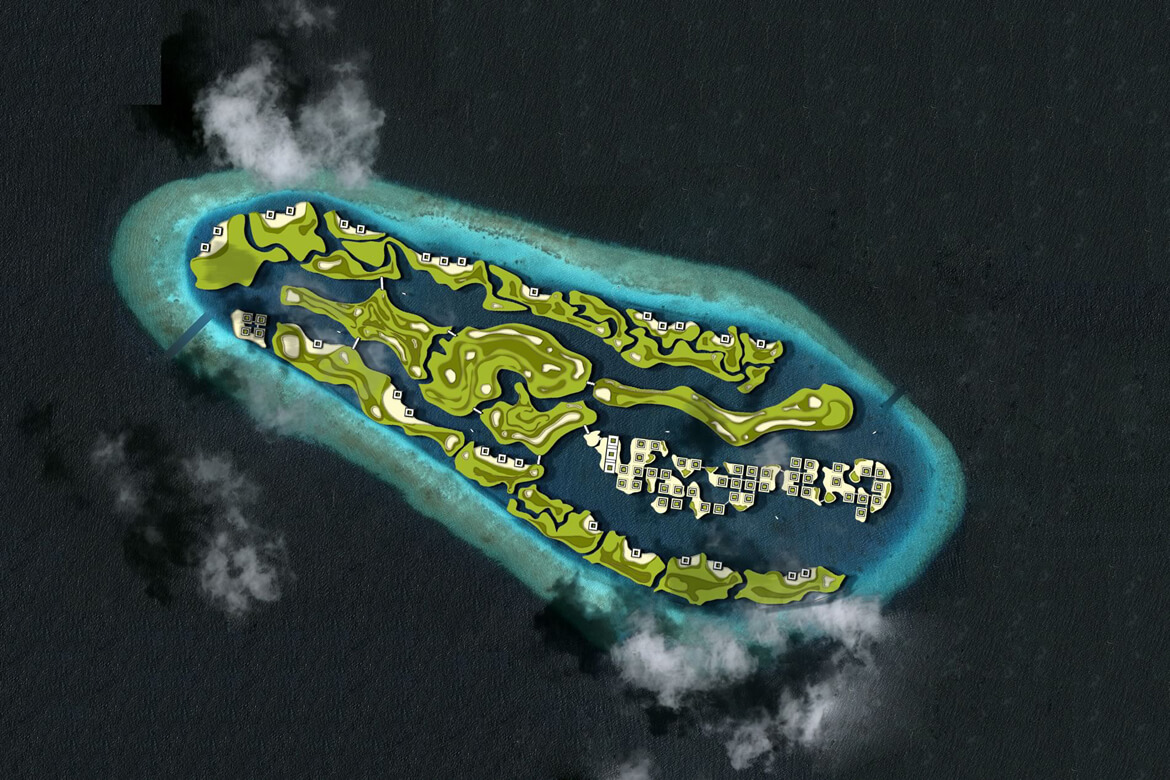
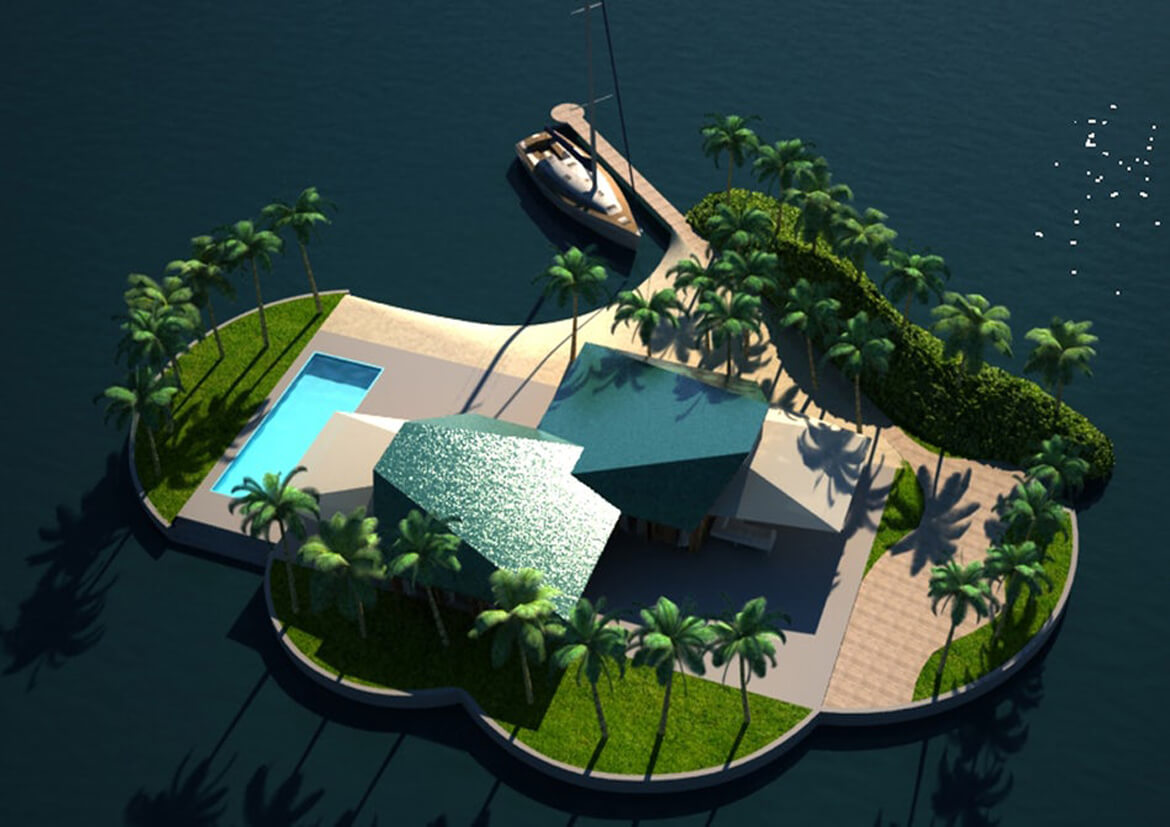
Mail Online, Mark Prigg, Aug 2012
For golfers who struggle to avoid the water hazards, it could be a challenging course. The Maldives has revealed plans for a radical £320m floating course, which players access by an undersea tunnel. The course is part of a massive plan to replace the sinking islands with a network of man made, floating islands. With an average elevation of just five feet above sea level the Maldives, with its 1,192 islands in the Indian Ocean, is the lowest country in the world.
Amid fears many of the islands will soon sink into the sea, the Maldivian government has started a joint venture with the architectural firm Dutch Docklands International to build the world’s largest series of artificial floating-islands.The Dutch firm has already built floating islands for prisons and housing from slabs of concrete and polystyrene foam.
In the Maldives, the floating islands will be anchored to the seabed using cables or telescopic mooring piles, making landforms that are stable even in storms. The architects chose this approach to minimise damage to the seabed, and also chose to build lots of small islands to reduce the shadow on the seabed, which could affect wildlife. The islands will be constructed in India or the Middle east to reduce costs, then simply towed to their final destination in the Maldives.
The islands will also be designed for swimmers, divers and even private submarines to enter them from below, and the Dutch firm designing the scheme has said visitors will be able to rent private submarines that can surface right in the middle of their living rooms. The idea is the brainchild of Dutch firm Waterstudio who designed the project. It is being engineered by floating architecture specialists Dutch Docklands. CEO Paul van de Camp said: ‘We told the president of the Maldives we can transform you from climate refugees to climate innovators.
‘And we have a way of building and sustaining this project that is environmentally friendly too. ‘This is going to be an exclusively green development in a marine-protected area.’
The first part of the project to be built will be the golf course. ‘This will be the first and only floating golf course in the world – and it comes complete with spectacular ocean views on every hole,’ said van de Camp. ‘And then there’s the clubhouse. ‘You get in an elevator and go underwater to get to it. ‘It’s like being Captain Nemo down there.’
Designer Koen Olthuis said: ‘We’ll be building the islands somewhere else, probably in the Middle East or in India – that way there’s no environmental cost to the Maldives. ‘When it comes to the golf course, the islands will be floated into position first and then the grass will be seeded and the trees planted afterwards.’ Development on the course is expected to begin later this year, and it should be ready for play by the end of 2013 ahead of the full launch in 2015.
The proposed site is just a five-minute speedboat ride from the capital of Male, giving golfers the chance to make quick journeys to the mainland. Amazingly, the course will even be powered by solar energy which is a resource the Maldives has plenty of – as it’s located just north of the equator. The designers claim the entire resort will be carbon neutral.
The ambitious plans will also feature 43 private islands. Called Amillarah (the Maldivian word for Private Island). This unique project exists of 43 floating private Islands in a archipelago configuration. Each has its own jetty for yachts, along with a pool. Palm trees give each mini island its own secluded area.


